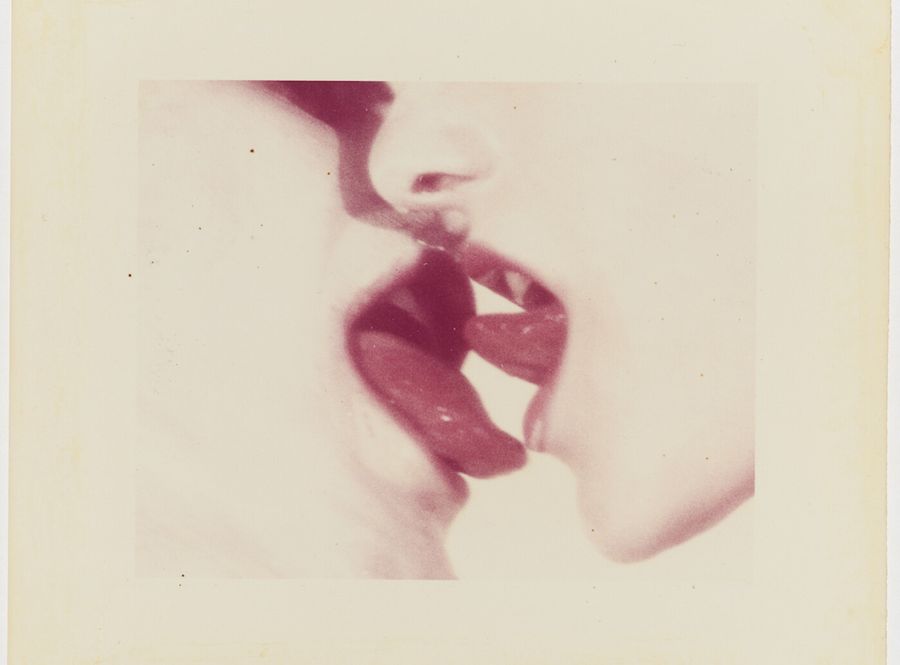
EROS RISING: VISIONS OF THE EROTIC IN LATIN AMERICAN ART
Curated by Mariano López Seoane and Bernardo Mosqueira, Eros Rising: Visions Of The Erotic In Latin American Art features works by Artur Barrio, Oscar Bony, Carmelo Carrá, Feliciano Centurión, David Lamelas, Carlos Motta, Wynnie Mynerva, La Chola Poblete, Tadáskía, and Castiel Vitorino Brasileiro, ten artists whose practices challenge conventional modes of imagining the erotic experience.
Focusing on works on paper, this exhibition draws a tentative chart of different territories, generations, and embodied experiences to explore how artists have given visual expression to sensations, feelings, and ideations that are essentially irrepresentable and ungraspable.
The astrological aura in the title and the immediate reference to “visions” point to an open and winding investigation that, more interested in imagination than in determination, defuses the rationalistic protocols of academic research in order to approach what appears as immeasurable and, therefore, indefinable.

Inspired by a series of pastel drawings by David Lamelas (b. 1946, Argentina) from 2014 and 2015, Eros Rising explores how artists have subverted conventional representations of sex—often based in the objectification and categorization of the body—to instead convey the myriad sensations bound up in erotic encounters.
The featured artists reimagine sensuality in surreal depictions that question the limits between the real and the fictitious, decentering the body by fragmenting it or displacing it altogether. Viewed collectively, these works challenge codified expressions of sensuality and static definitions of the human to envision the body as radically open.
Encompassing a broad range of perspectives and styles, Eros Rising presents a cross-section of intergenerational artists who have contested the restrictive boundaries of identification, grasping for more fluid and expansive conceptions of the self and the erotic.



In Lamelas’s drawings, human forms are evoked through celestial phenomena—a rising sun or a flowing meteor shower—that find the mundane in the cosmic. Works by Artur Barrio (b. 1945, Portugal), Tadáskía (b. 1993, Brazil), and Castiel Vitorino Brasileiro (b. 1996, Brazil) similarly propose other ways of re-envisioning the body and the surrounding landscape, dissolving the barrier between the self and the outside world. Meanwhile, Feliciano Centurión (1962–1996, Paraguay) and La Chola Poblete (b. 1989, Argentina) tease out mythological references from ancient Greece and Andean lore to approximate the otherworldliness of desire.
While many of these works approach the languages of abstraction, others rethink the canon of figuration by transforming the body. An untitled 1968 drawing by Carmelo Carrá (b. 1945, Italy) fractures the human form through the broken outline, while the large watercolor Formas de alargar un pene (2021) by Wynnie Mynerva (b. 1993, Peru) elongates and warps the phallus. The body becomes grotesque in a small ink drawing by Carlos Motta (b. 1978, Colombia), from his series We The Enemy (2019), which reflects on the designation of certain sexual identities as “deviant” or “perverse” in Christian traditions.
Two photographs by Oscar Bony (1941–2002, Argentina), which were censored for their erotic content when they were first displayed in Argentina in 1976, similarly depict the body in segments, zooming in on two bright red, intertwining tongues.



EROS RISING: VISIONS OF THE EROTIC IN LATIN AMERICAN ART
The Institute for Studies on Latin American Art (ISLAA), 50 East 78th Street, New York, NY
Jun 16–Sep 30, 2022
También te puede interesar
DANIEL LIE. UN CRUCE DE SABERES ATRAVESADO POR LO QUEER
La práctica artística de Daniel Lie ha sido leída como una constelación de relaciones entre la naturaleza, las comunidades humanas y los múltiples conocimientos que las atraviesan. Pero su obra no repara en lo...
ARCOmadrid 2015 EN IMÁGENES
ARCOmadrid 2015, una de las ferias internacionales más importantes, celebra su 34ª edición a partir de hoy y hasta el 1 de marzo con la participación de 218 galerías de 29 países, de las…
Mundos Alternos:art And Science Fiction in The Americas
"Mundos Alternos: Art and Science Fiction in the Americas" brings together the work of 30 international artists from across Latin America and the Caribbean, including Mexico, Cuba, Argentina, El Salvador, Brazil, Chile and Puerto...



